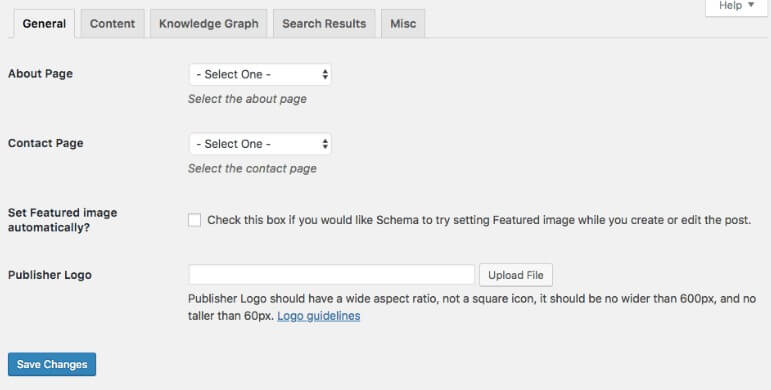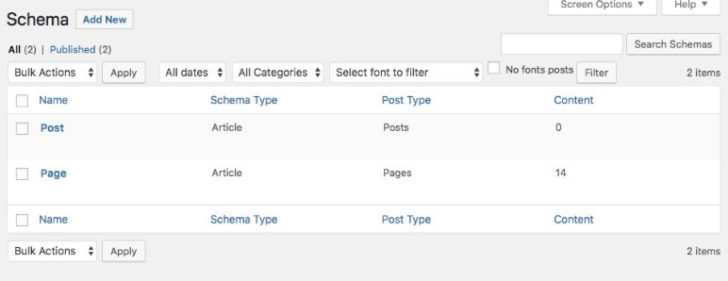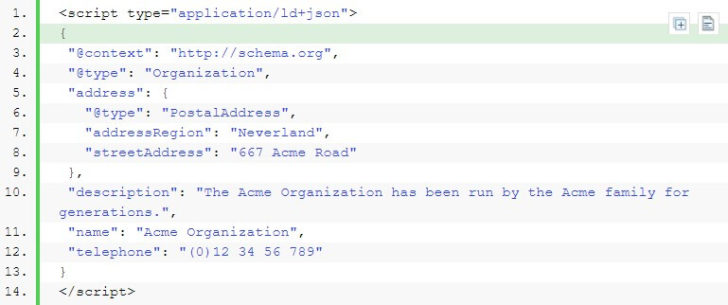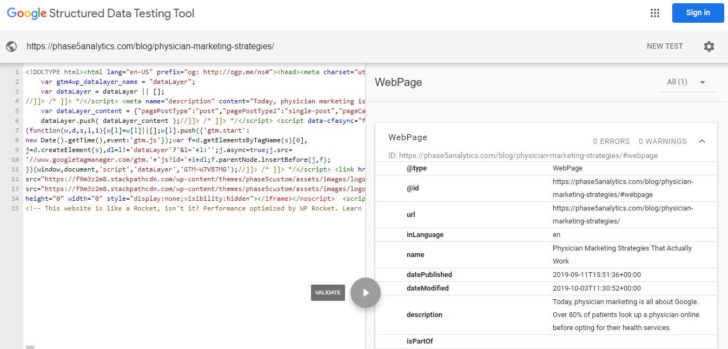It goes without saying that the world of SEO is becoming ever more technical, and over the past decade, webmasters, SEOs, and in-house teams have been widening their knowledge and skillsets to help their sites compete in search engine results pages.
One of these areas, which has seen the most development since its launch in 2011, is, of course, schema.org markup.
Although it has been eight years since the data schema was introduced, whether due to lack of development capability or technical knowledge, many popular brands are still to implement structured data to their websites.
In this article, we’re going to take a look at what structured data is, and the benefits that the markup can provide for websites.
A brief introduction to structured data
Put simply, structured data is a form of markup that is implemented in the code of a website and provides search engines with specific pieces of information about a page, site, or organization.
By improving the knowledge that a search engine has about a particular page or site, it can, therefore, provide users with the information that they need when conducting a search.
It also means that if a business invests in structured data throughout its site, it could enjoy higher and more relevant levels of traffic.
But how does this happen?
Structured data can enhance AMP pages
Despite structured data not being a direct ranking factor, it can, however, influence other elements of your website which are ranking factors.
In a world where a lot of searches (even the biggest part) are made through mobile devices, site speed has never been more important, especially when you consider that users will leave a page that takes longer than three seconds to load.
For this reason, many businesses have implemented Accelerated Mobile Pages (AMP) on their site (read more about them here), which can help overcome critical mobile speed issues and improve the usability of pages.
But most people don’t realize that AMPs can actually be enhanced via structured data markup.
Google states that by implementing structured data to AMPs, they can enhance the appearance of the page in mobile search results while offering the ability to appear within rich results.
If a site gains the opportunity to appear within rich results for an important search term, the site could gain a great amount of search traffic as a result.
You can learn a little more about how structured data enhances AMP pages in this handy Google guide.
Structured data helps sites appear in Google’s Knowledge Graph
For sites that appear in highly competitive verticals, getting the edge over your competition is critical, and one way to do this is by establishing your site presence with Google and appearing in the Knowledge Graph.
Knowledge Graph cards appear on the right-hand side of search results and they provide users with functional and visual elements of your site; making it far easier for users to familiarise themselves with it.
To enable your business Knowledge Graph card, you need to add the necessary Corporate Contact markup on the homepage of your website.

Like all types of markup however, there are important guidelines and rules that you must follow, such as ensuring that markup is not blocked from crawling by robots.txt directives.
You can find more information on how to properly implement Corporate Contact markup in this Google Developers Guide.
Structured data can be vital for improving a site’s click-through rates
CTR of a website is rather important for its rankings. And according to Neil Patel, the best way to increase it is to research and use keywords, especially long-tail keywords. Serpstat can help you make deep and useful keyword research and improve your rankings as well.
Also, the whole point of structured data is to provide clean and concise parcels of information to search engines so that you can clarify the purpose of your site and its pages to quickly provide users with the accurate information that they require.
This means that by implementing well-written and relevant structured data into your pages, your site should be shown to a more relevant audience base, meaning that your click-through rates will inevitably improve.
In fact, sites that implemented structured data found that their CTRs improved by at least 10%.
How to implement structured data
We’ve already learned the meaning and value of structured data on the site. Now, we’ll explore two of the main approaches for adding schema markup to your website.
How to add Schema.org micro-markup with Schema plugin
The easiest way to add a micro-markup to the site is to use the Schema plugin. It works with any available schema options and is embedded in the Yoast SEO plugin.
To install, go to Plugins – Add New in the WordPress console and find “Schema.” Activate it and go to Settings.

Fill in basic information, such as the location of your About Us page, Contacts, upload your website logo.
By filling out additional information, content, knowledge graph, and search results, you can optimize your site for each of the areas.
Then, you can go to Schema – Types and add the selected schema type or publication category.

If the above-mentioned plugin doesn’t suit you, you can choose from a large number of WordPress plugins alternatives for schema markup. Here are some of them:
- All In One Schema Rich Snippets
- Schema JSON-LD Markup
- Rich Reviews
- WP SEO Structured Data Schema
- Markup (JSON-LD) structured in schema.org
How to add Schema.org markup manually
Here, you should work more with the code, but you can add your schema markup individually to any page or post.
With arbitrary schema markup, you can include several different types of markup on the same page. For example, if you have an event page, and you also want to place a feedback schema on it, you can easily do it.
The most efficient way to manually add schema to your site is JSON-LD. This method is also recommended by Google. It’s based on JavaScript. You’ll add schema markup to your site as a script, so it’ll be much easier to read and debug.
Remember to follow all Google structured data guidelines while creating the code for your markup.
If you don’t know how to write markup code, you can use the Structured Data Markup Wizard from Google or JSON-LD Generator to create your code.
To use this approach, go to any post or page where you want to put the markup. Click Screen Settings at the top of the page and check the “Custom Fields” box. Now, scroll down to the “Custom Fields” settings and press “Enter new” to create a new field. Name it “Schema” and enter the code. For example, local businesses data type:

Please provide the source and a possible caption for the above image
Next, you’ll need to edit your header.php file. Open it and paste the following code before the closing </head> tag:

Thanks to these actions, your schema code will load separately with metadata. You can add any kind of custom schema markup to your WordPress website with the above-described approach.
Just remember to run your page or post in the Google structured data testing tool to check your markup for errors. This validator understands the following formats:
- Schema.org
- Microdata
- RDFa
- JSON-LD
Using it, you can check the page in two ways:
- Copy in HTML format
- Specify a link to the page
If the site is being developed on a PC or if you need to test some options, you need to use the first method. The second one is suitable for the final verification of the finished markup. Also, here you can check the site pages when using ready-made CMS templates. They may contain some errors in markups.
For example, let’s check the Phase 5 Analytics page. After copying the URL and clicking the “Run test” button, the result of the verification appeared on the screen. There was the HTML code on the left, and markup on the right with errors if they were found.

Final word
Adding structured data to the site will not take a lot of time. This action will help improve the look of the snippet in the search engine and increase traffic to the site.
The process may seem a little technically complicated, but you’ll discover that even the option to manually add it is not as hard as you’d assume. In addition, many available plugins will make developing structured data very simple.
Inna Yatsyna is a Brand and Community Development Specialist at Serpstat. She can be found on Twitter @erin_yat.
The post Why businesses should implement structured data appeared first on Search Engine Watch.
from SEO – Search Engine Watch https://ift.tt/33zVb5M
via IFTTT

No comments:
Post a Comment